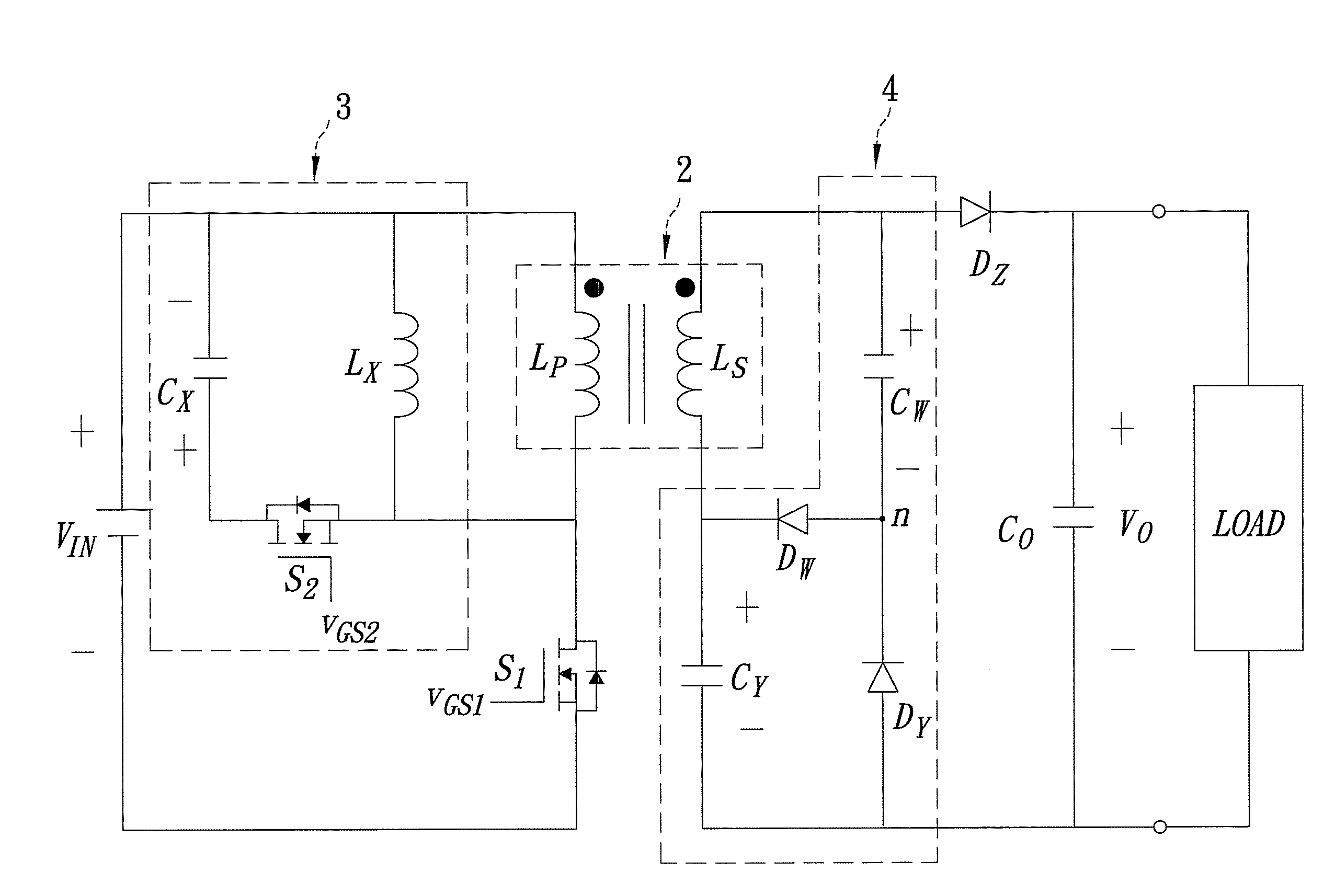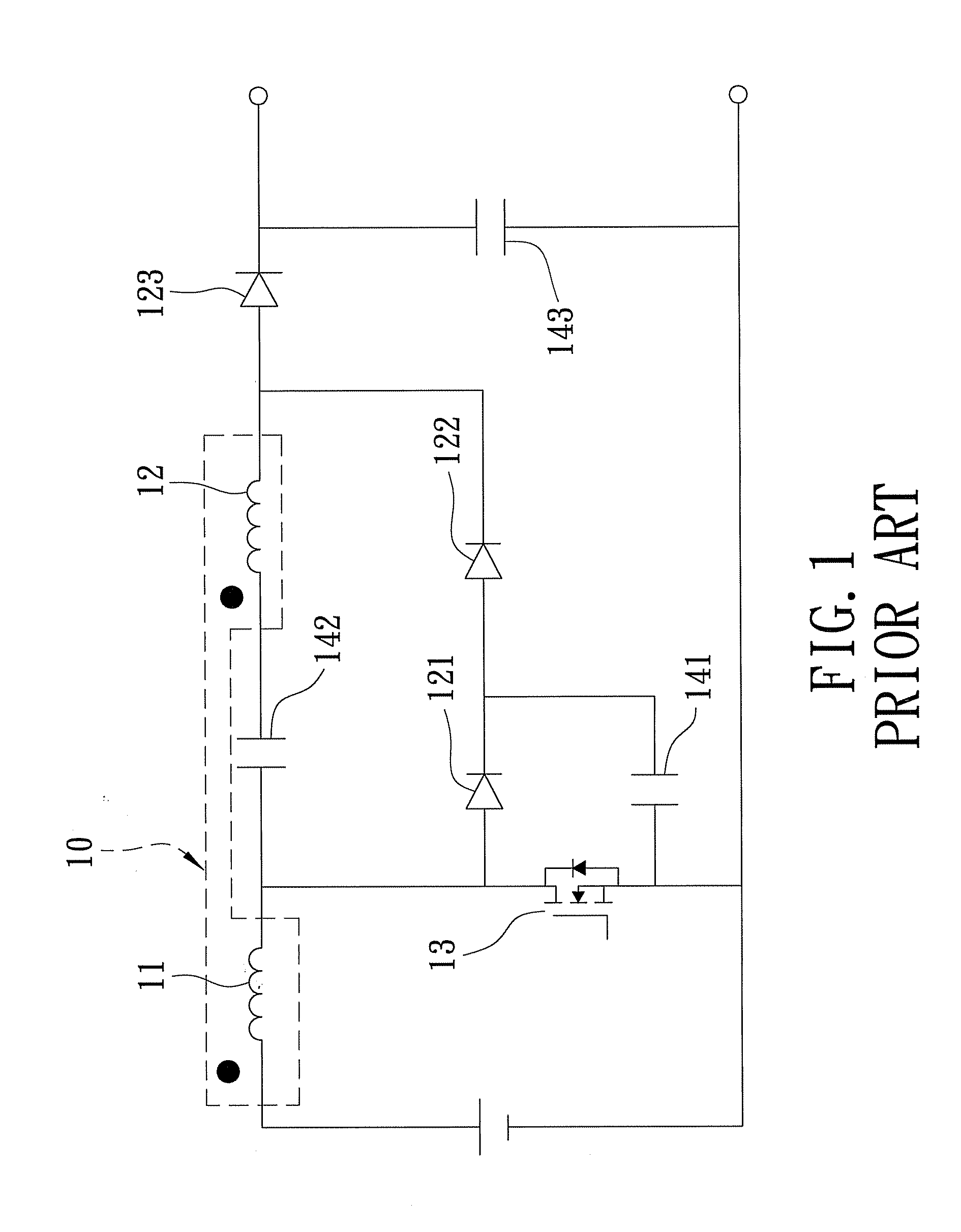Boost Device For Voltage Boosting
a boost device and voltage technology, applied in the direction of dc-dc conversion, power conversion systems, instruments, etc., can solve the problems of damage to the conventional boost device, the boost device cannot provide electrical isolation, etc., and achieve the effect of boosting the voltag
- Summary
- Abstract
- Description
- Claims
- Application Information
AI Technical Summary
Benefits of technology
Problems solved by technology
Method used
Image
Examples
Embodiment Construction
[0043]Referring to FIG. 2, the preferred embodiment of a boost device according to the present invention is shown to be adapted for boosting an input voltage (VIN) supplied by an external source to an output voltage (VO). The boost device includes a transformer 2, a first switch (S1), a clamp circuit 3, an output diode (DZ), a boost circuit 4, and an output capacitor (CO).
[0044]The transformer 2 includes first and second windings (LP, LS) wound around an iron core (not shown). A winding ratio of the first and second windings (LP, LS) is equal to 1:N. Each of the first and second windings (LP, LS) has a polarity end serving as a first end, and a non-polarity end serving as a second end. The polarity end of the first winding (LP) is adapted to be coupled to the external power source for receiving the input voltage (VIN).
[0045]The first switch (S1) is coupled between a reference node, such as ground, and the non-polarity end of the first winding (LP). The first switch (S1) has a contro...
PUM
 Login to View More
Login to View More Abstract
Description
Claims
Application Information
 Login to View More
Login to View More - R&D
- Intellectual Property
- Life Sciences
- Materials
- Tech Scout
- Unparalleled Data Quality
- Higher Quality Content
- 60% Fewer Hallucinations
Browse by: Latest US Patents, China's latest patents, Technical Efficacy Thesaurus, Application Domain, Technology Topic, Popular Technical Reports.
© 2025 PatSnap. All rights reserved.Legal|Privacy policy|Modern Slavery Act Transparency Statement|Sitemap|About US| Contact US: help@patsnap.com



